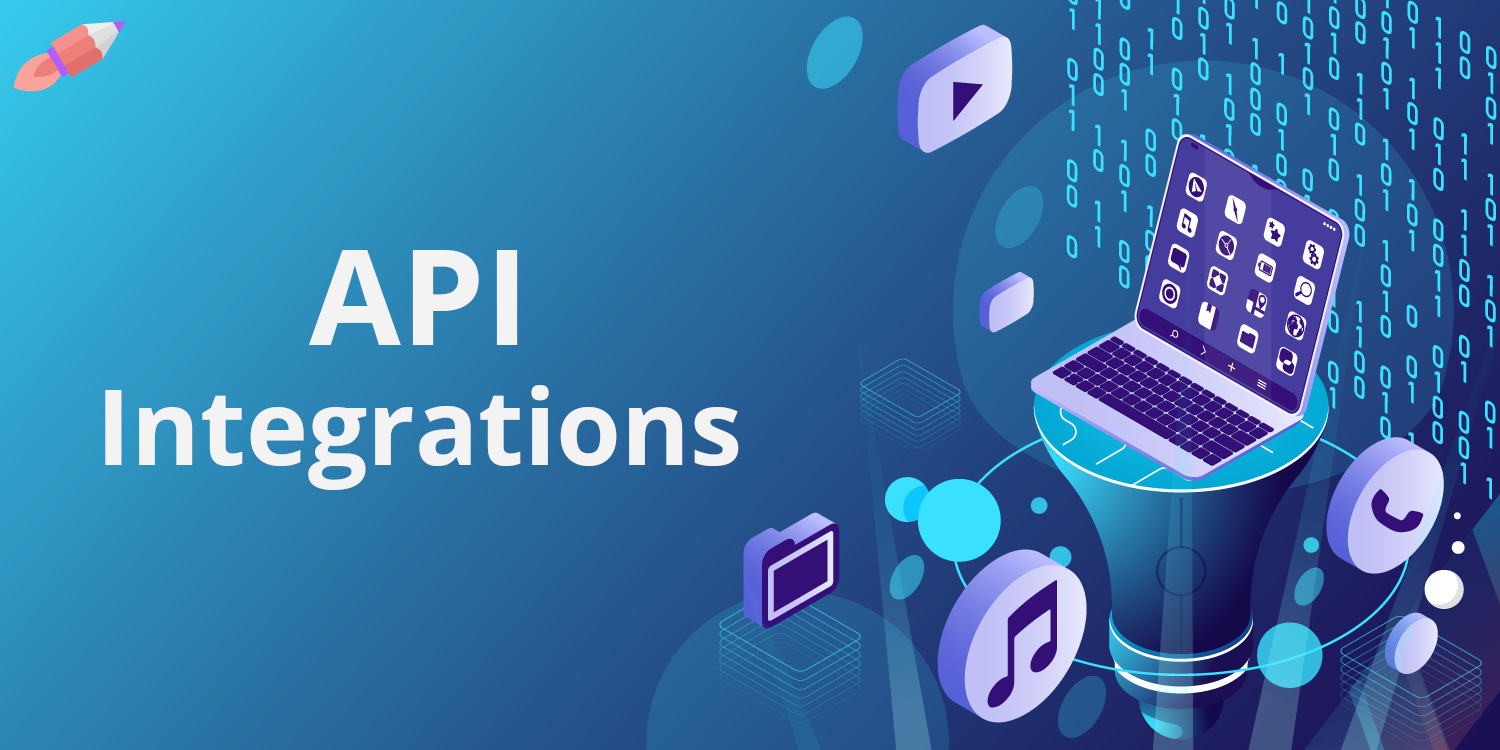What is an API Integration?
With so many online tools available today, businesses need an effective way to work across multiple platforms, advancing their operations and streamlining their processes. Achieving such results requires knowledge about application programming interfaces (APIs) and expertise in integrating them into existing IT infrastructure. If you want to create an efficient and effective platform, it’s important to consider how different systems can work together. API integration enables businesses to send and receive data from other companies and applications, rather than independently connecting each app individually.
What is an API Integration?
API integration can be defined as the process of creating a means for two or more APIs to share data and communicate with each other without human interruption. It involves the use of APIs to enable communication between two web tools or applications. It allows organizations to automate their systems, enhance the seamless sharing of data, and integrate current applications.
API integration has become pivotal in the modern world due to the explosion of cloud-based products and apps. As such, organizations need to create a connected system where data will be relayed flawlessly between various software tools without the need to do it manually. API integration has proved to be a much-needed solution as it allows the sharing of process and enterprise data among applications in a given ecosystem. It improves the flexibility of information and service delivery, as well as makes the embedding of content from different sites and apps easy. An API acts as the interface that permits the integration of two applications.

Why is ỉt necessary?
API connectivity helps applications share data and communicate with each other without human interruption. You enable communication between two web tools or applications through their APIs. It allows organizations to automate systems, enhance the seamless sharing of data, and integrate current applications.
Enterprises cannot overlook the importance of API integration in the modern world. After the explosion of cloud-based products and apps, organizations must create a connected system where data is relayed automatically between various software tools. API integration makes that possible as it allows sharing of processes and enterprise data among applications in a given ecosystem.
It unlocks a new level of flexibility in information and service delivery. It also makes the embedding of content from different sites and apps easy. An API acts as the interface that permits the integration of two applications.
Benefits of API integration
Integrating APIs into one’s applications can bring a number of benefits to an individual or an organization, which can include:
- Efficiency: API integration automates the transfer of information and data from one application to the next, which was previously done manually by a payroll employee. It has the potential to automate repetitive tasks by allowing systems and applications to communicate and share data with one another, thereby increasing overall efficiency.
- Scalability: By utilizing API integration, businesses can avoid having to start from scratch when developing certain services or applications. This can help businesses grow and expand by making it easier for different systems to communicate with one another, share data and functionality, and create new capabilities and services. As a result, the business’s scalability improves.
- Cost Savings: API integration can reduce the need for manual data entry, which not only improves data accuracy but also saves money on labor and reduces the risk of errors. The API integration can assist businesses in lowering costs by mitigating the need for custom development and allowing them to leverage existing systems and services.
- Reduced Errors: API integration can reduce the need for manual data entry and thus increase data accuracy by allowing different systems and applications to communicate with each other and share data. For example, accounting software can use an API to automatically import transaction data from a bank account, eliminating the need for manual data entry and lowering the risk of errors.
How API Integration is achieved
Currently, there are a few techniques to achieve API integration, and they significantly depend on the unique needs of your system or business.
Custom Integrations
This kind of integration involves the use of hand-written scrip from a software developer with expertise in the APIs you want to integrate. Although this technique was famous some years back, its popularity has plummeted due to the emergence of other straightforward integration methods.
Connector Applications
These are applications that are designed to feature APIs that facilitate the integration between two renowned software platforms. They are mass-produced to be used by various enterprises.
API Integration Management Platforms
Usually SaaS applications, these platforms are dedicated to the development of API integrations that help join other SaaS applications and systems. Unlike when you needed an expert developer to write you a script from scratch to help integrate your applications, today, you can build custom integration apps using robust tools that are available in the market.
API Integration Process
Regardless of the API integration tool you choose, you must follow a particular process that features three essential parts. For starters, you need to evaluate your goals and all your business processes. You need to identify the pain points and identify how integrating two or more software platforms can help eradicate these problems. It is vitally essential to understand that the individuals who can help you determine how integration can benefit your enterprise are software analysts and system administrators.
When you have determined and spelled out your goals, you can now start the development process. Your developers can progress to build a custom application that will interact with the identified software platform APIs to establish new functionalities that help accomplish your goals.
Finally, you need to perform some tests on your system to ensure that the integration app is up to the task and is bug-free.

Conclusion
API integrations connect the different components of your tech stack to make them talk to each other and pass data seamlessly. They’re also important because building automated workflows of different applications that have been integrated via API can get rid of time-consuming manual labor, and also seamlessly transfer data that might otherwise require manual input and incur versioning issues, and enable you to do more of the important work you need to, faster.